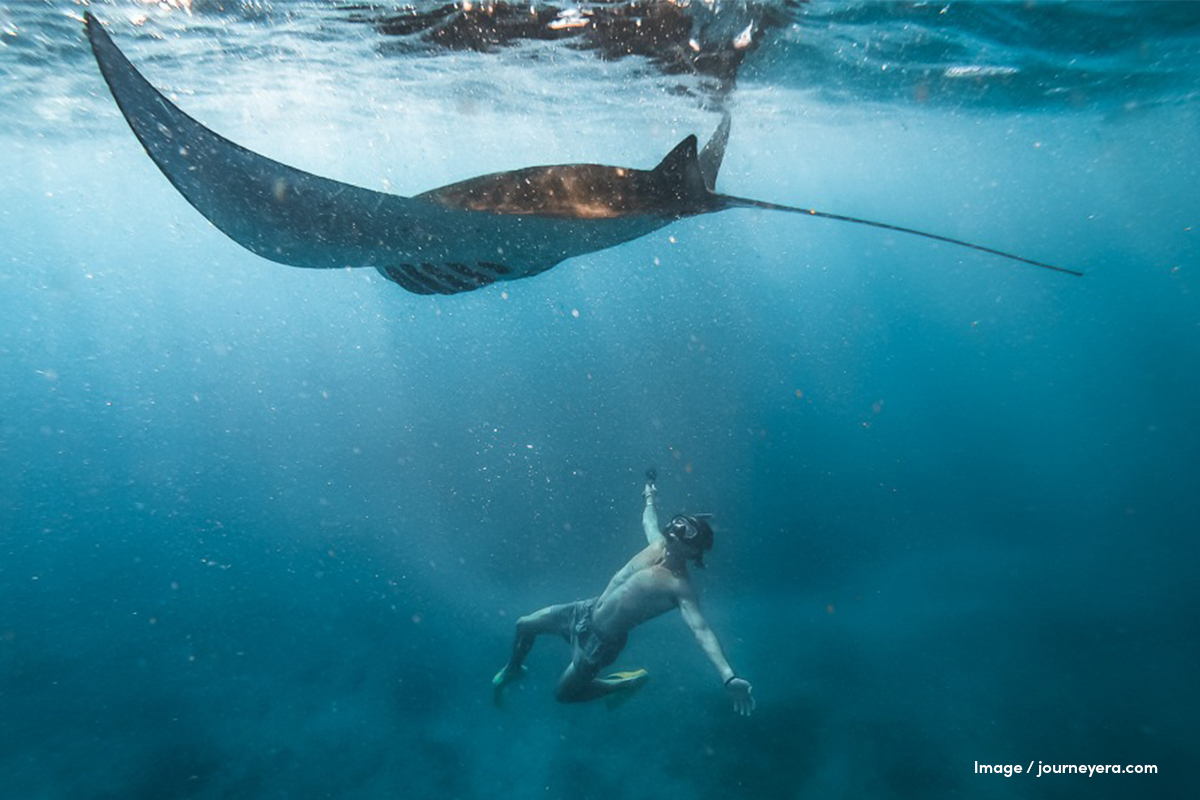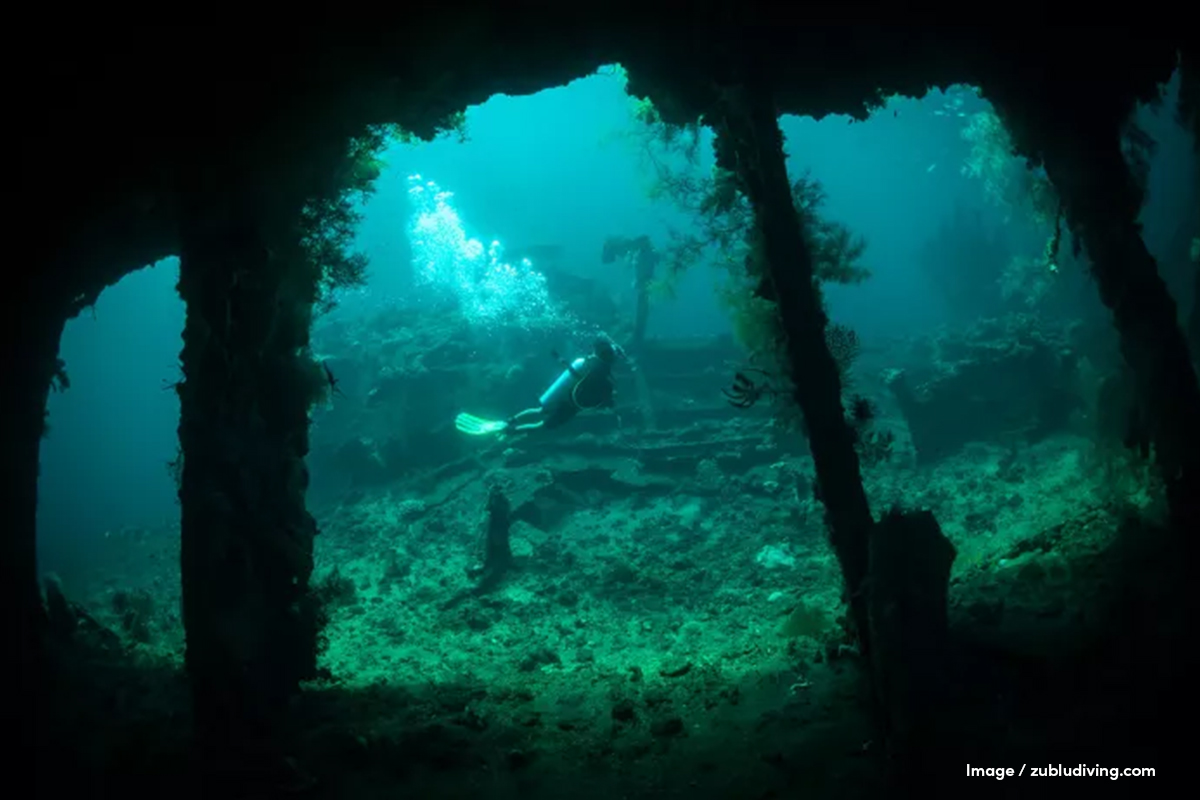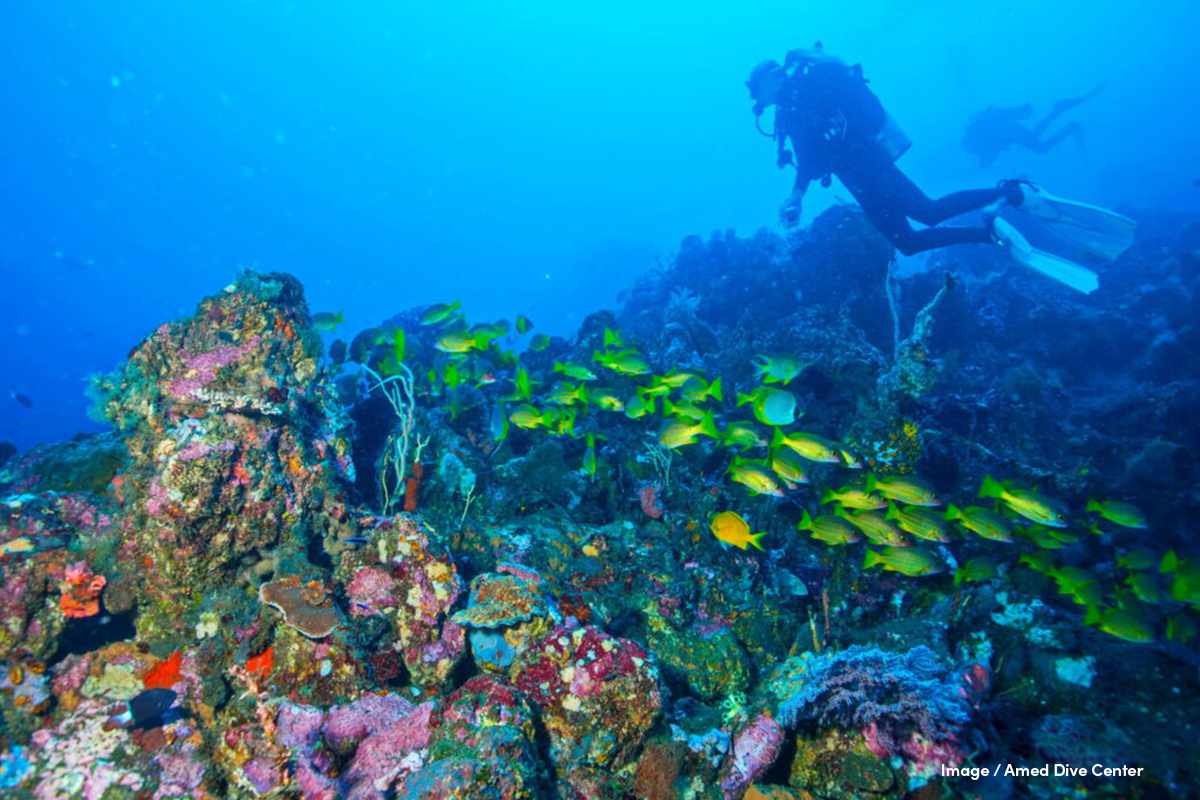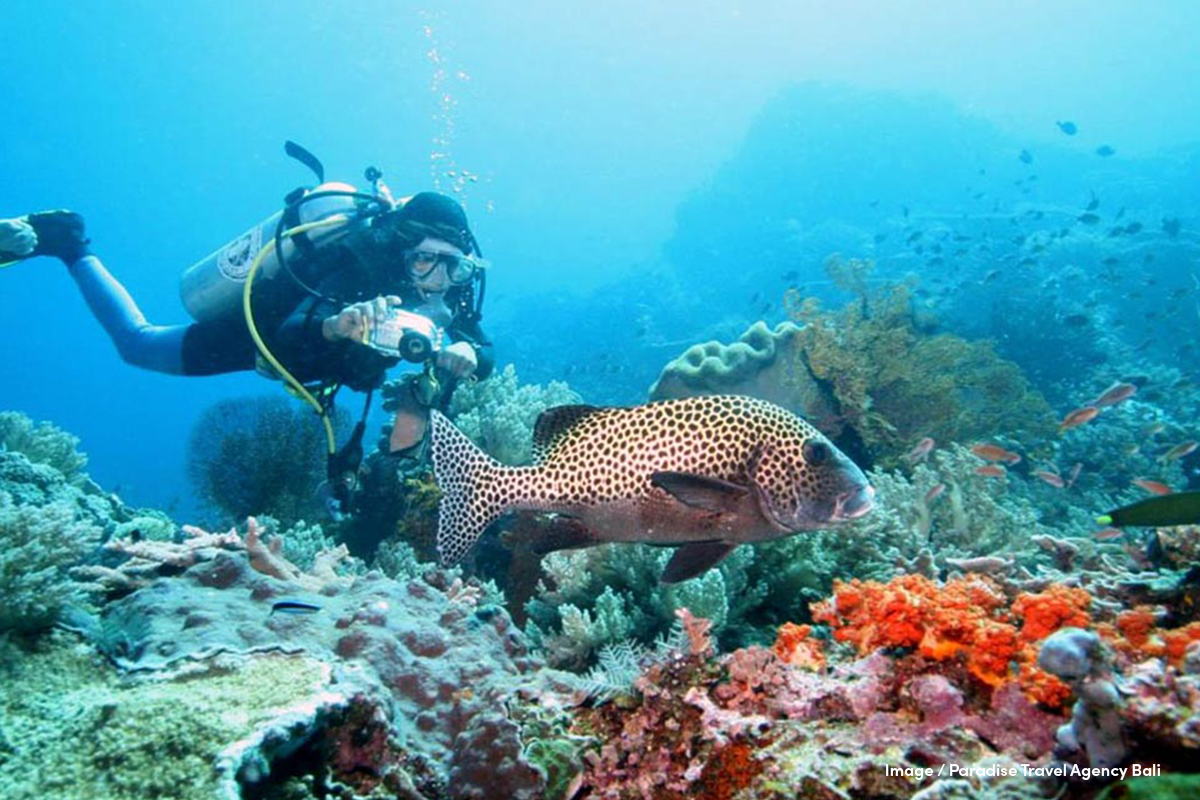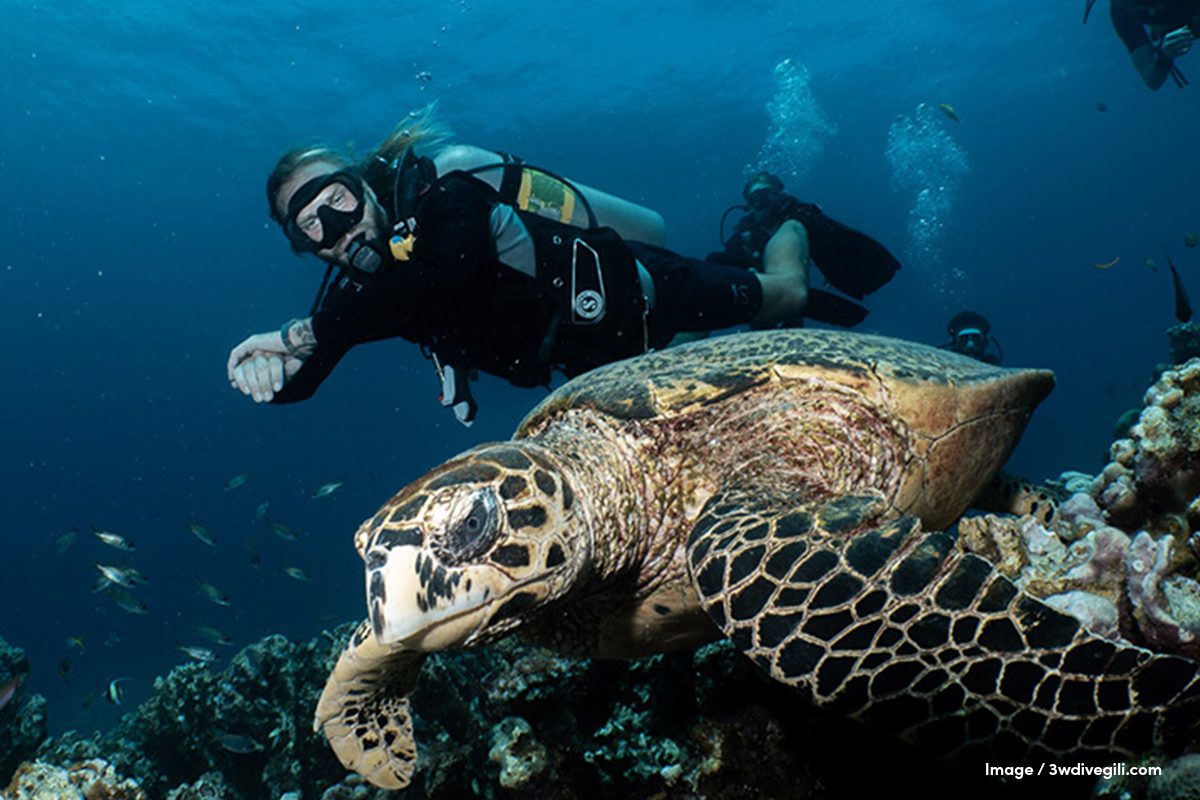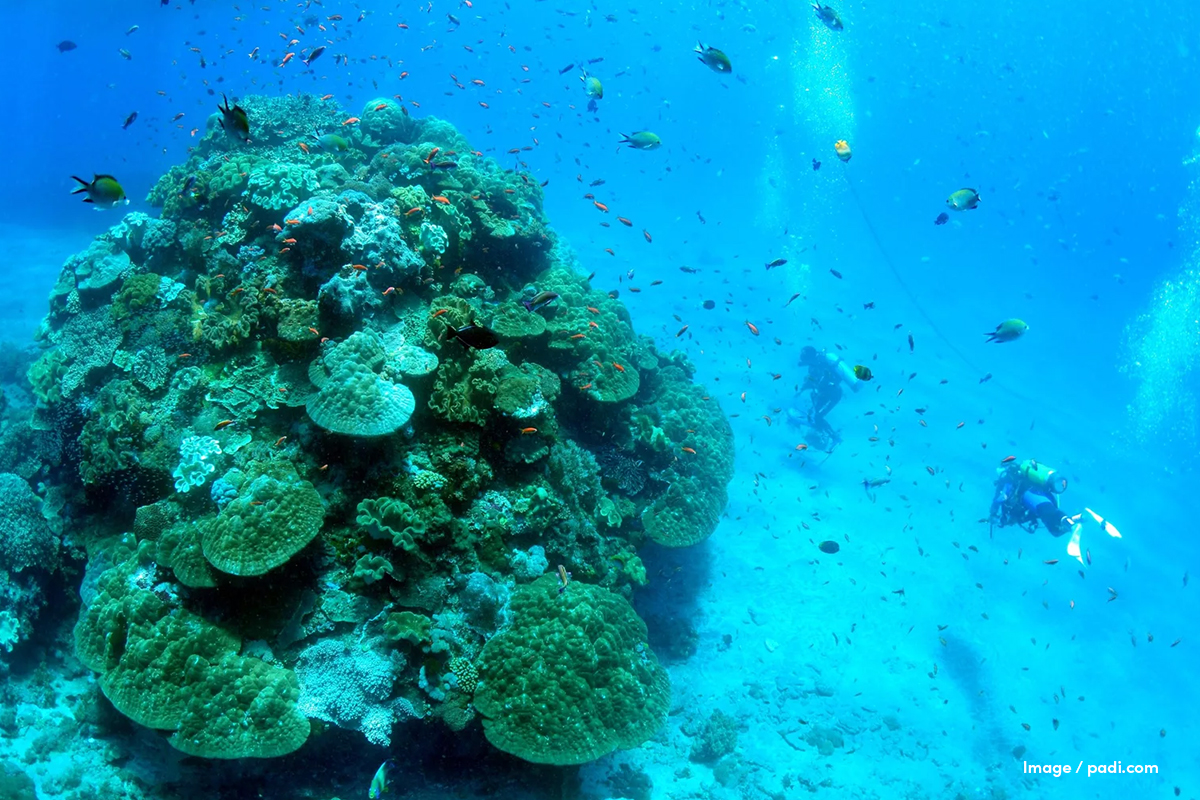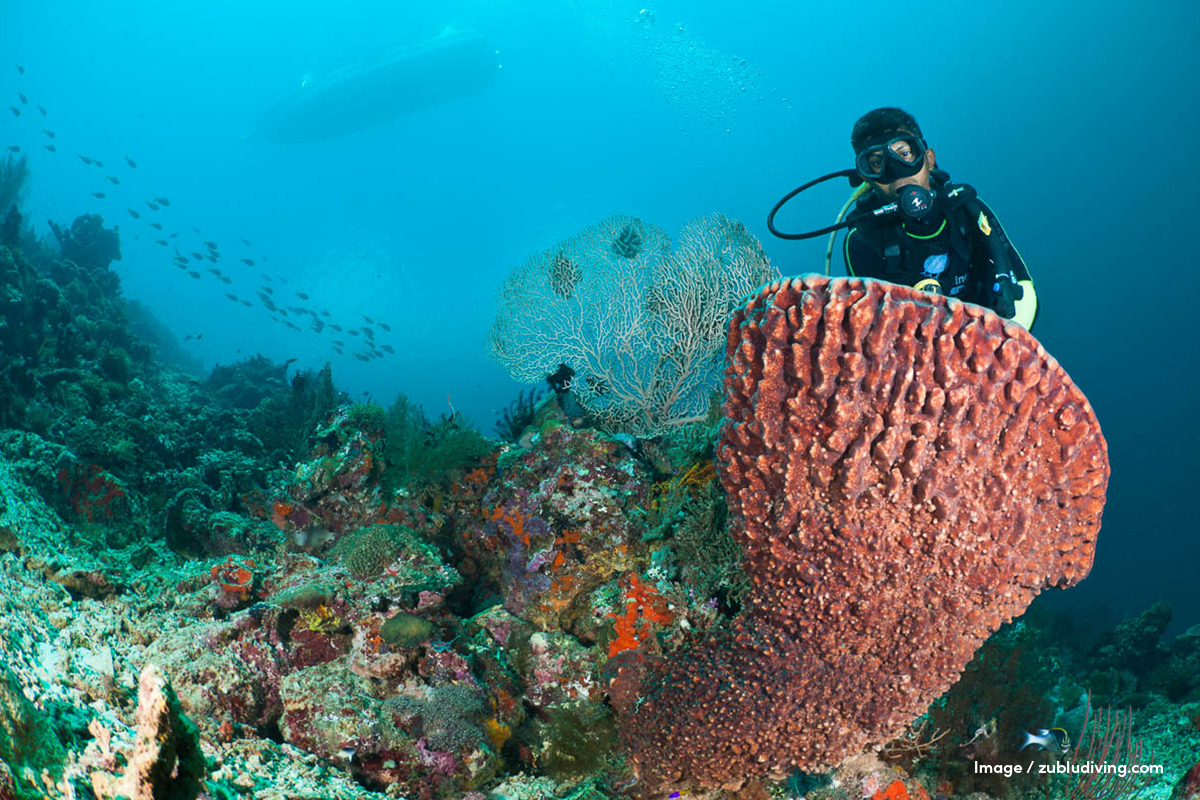Tulamben Bali Diving
Tulamben is a small village located on the northeast coast of Bali, whose waters present some of the richest in the world for marine life and year-round diving. The area is best known for its USAT Liberty Bali shipwreck dive spanning 120 metres long, located just 50 metres from the shore. Featuring both shallow and deeper areas, the wreck teems with coral, sponges, sea fans and fish. For advanced divers, the site offers a night diving experience, allowing for the opportunity to spot the more nocturnal marine life that inhabit the Liberty wreck.
Other dive sites in Tulamben include The Drop Off, a wall dive descending from three metres to 80 metres depth, suitable for a range of diving abilities. Formed from lava that flowed from Mount Agung after its eruption in 1963, the site features a vibrant wall covered in corals, gorgonians, anemones and sponges, as well as the chance to spot black tip reef sharks, barracuda, lionfish and even frogfish, octopus and stonefish.
If you’re searching for a more relaxed and casual dive, the Coral Garden features a depth of 5-15 metres and spans 150 metres along Tulamben Bay, presenting a shallow reef for divers, particularly beginners looking to discover colourful corals, statues and marine life. For budding underwater photographers or muck divers, the site is a treasure trove of photographic potential—Balinese statues, clear waters and macro life, including ghost pipefish, leaf scorpion fish, clownfish, harlequin and mantis shrimp and nudibranchs abound. Due to its shallow depth, the site also serves snorkelers extremely well.
Regardless of your skill level, the Tulamben area offers a collection of dive sites showcasing Bali’s reef and marine life, from barracudas and turtles to groupers, pygmy seahorses and clownfish.
